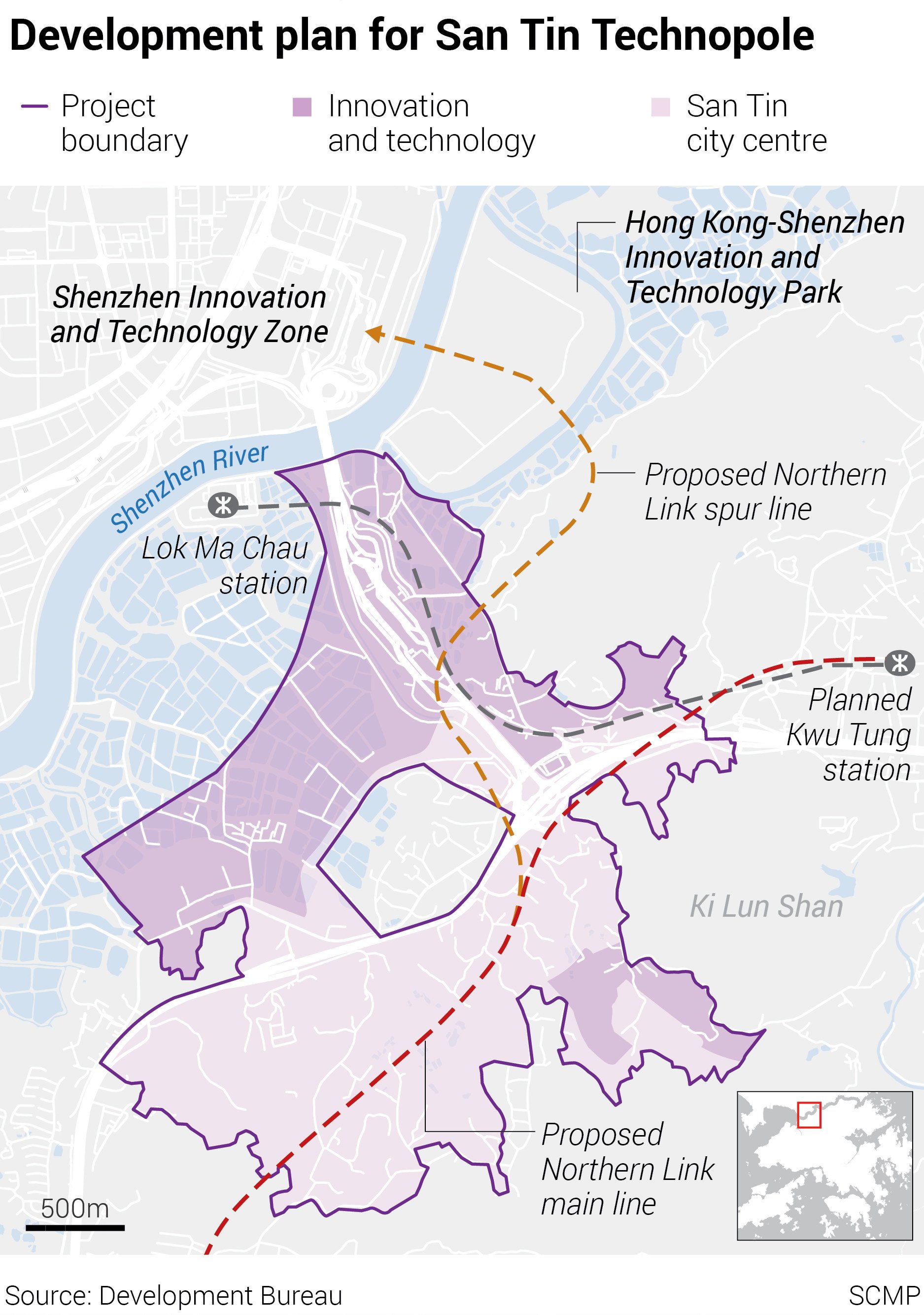Hong Kong lawmakers have questioned a government proposal to build a HK$700 million (US$90 million) exhibition hall at a prime site to showcase major development projects including the Northern Metropolis.
They also urged the government on Tuesday to lower the cost of the first-stage development of the San Tin Technopole, a hub near the border with mainland China, after authorities revealed they would apply for HK$30 billion in funding from the legislature.
At the centre of the controversy was a government plan to spend around HK$600 million to HK$700 million on setting up a gallery on the Wan Chai North waterfront to showcase major projects, such as the Northern Metropolis and a major reclamation project off Lantau Island.
Do you have questions about the biggest topics and trends from around the world? Get the answers with SCMP Knowledge, our new platform of curated content with explainers, FAQs, analyses and infographics brought to you by our award-winning team.
The funding for the gallery was included in the government’s HK$30 billion planned financial application for the first-stage development of the technopole.
Lawmaker Lo Wai-kwok, chairman of the Business and Professionals Alliance for Hong Kong, questioned whether the government was fully utilising the prime site by building the gallery there.
“The site of the gallery is very valuable,” he told a meeting of the Legislative Council’s development panel. “There are also not enough details available for discussion regarding construction of the gallery.”
Lawmaker Gary Zhang Xinyu echoed Lo’s concerns over the lack of information, noting the government had one paragraph on the plan in a document submitted to Legco.
“I have concerns about the bundled funding for both the gallery and the San Tin Technopole project,” he said, calling for more information from the government.
Fellow legislator Vincent Cheng Wing-shun called on the government to consider featuring the projects in the existing City Gallery in Central, which had the theme of urban planning and infrastructure development, instead of building a new one.

Permanent Secretary for Development Doris Ho Pui-ling conceded the document related to the gallery was “relatively simple” and pledged to reveal more details later.
“We will separate the funding for the gallery and the San Tin Technopole project in light of the lawmakers’ concerns,” she said.
Ho also said the government would look into the feasibility of merging the planned gallery with the City Gallery.
The technopole will occupy more than 600 hectares (1,500 acres) of land earmarked for the Northern Metropolis, a new business and residential area to be built on 30,000 hectares.
The first round of the tech hub’s development will cover about 158 hectares, including around 43 hectares for innovation and technology and roughly 8.5 hectares for logistics, and provide 5,500 to 6,000 public housing flats.
Residents are expected to begin moving in from 2031.
Some lawmakers urged the government to reduce the cost for the development of the technopole, while others, including Executive Council convenor Regina Ip Lau Suk-yee, voiced concerns over an ongoing judicial review against it.
Ho said the Development Bureau would seek legal opinions at each stage and enhance the government’s protections within the contracts.
She said contracts might include the various possibilities potentially be brought by the legal challenge.
Social worker Eddie Tse Sai-kit, who lodged the judicial challenge in August, sought to overturn a decision by environmental authorities to approve the project’s impact report. He argued that it breached the Environmental Impact Assessment Ordinance and lacked public consultation.
He told the Post he had been waiting 77 days for his legal aid application related to the challenge to be approved, but it had not yet been granted.
More from South China Morning Post:
- Hong Kong to seek HK$30 billion to start building San Tin Technopole amid judicial challenge
- Hong Kong’s tech hub project gets go-ahead despite judicial review challenge
For the latest news from the South China Morning Post download our mobile app. Copyright 2024.





